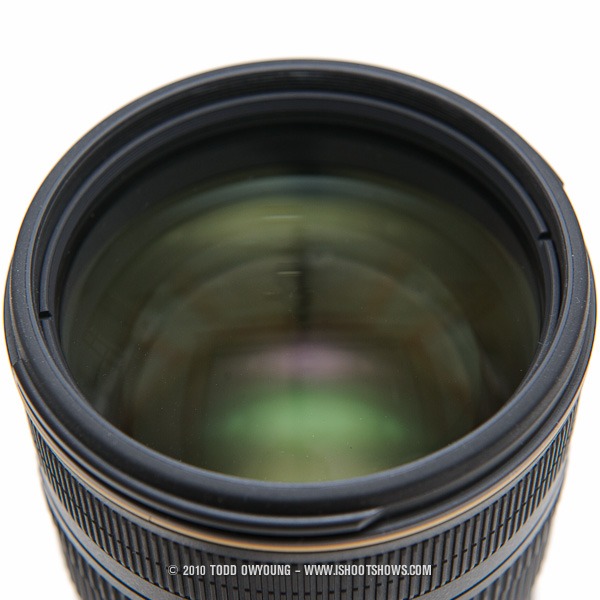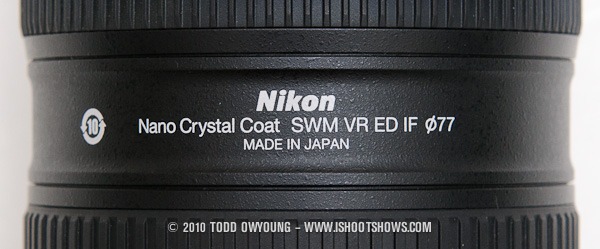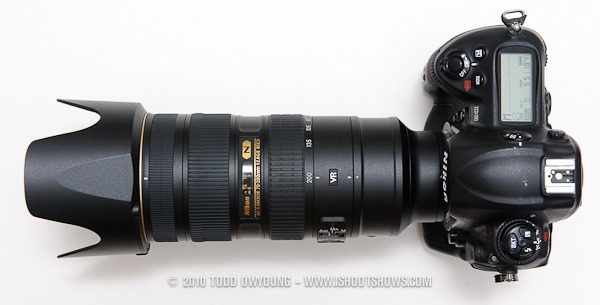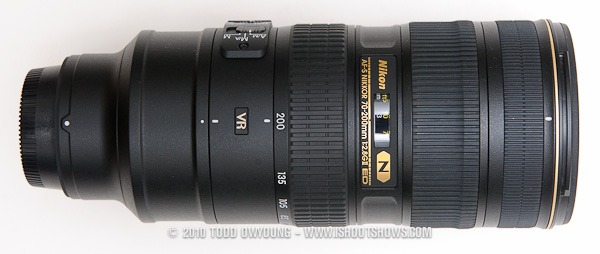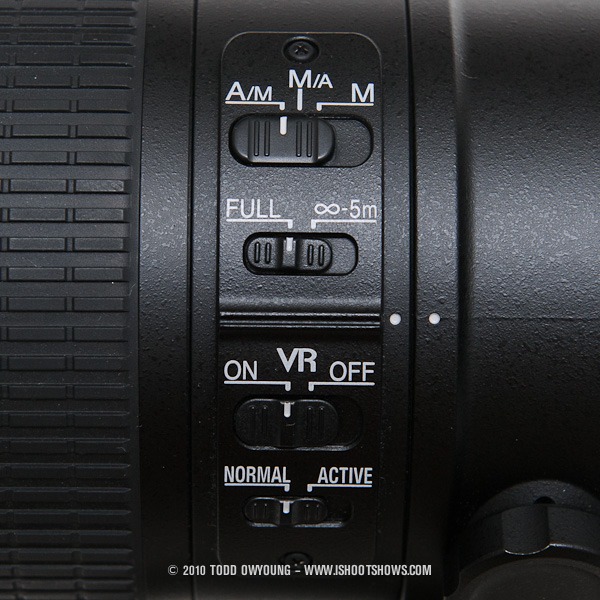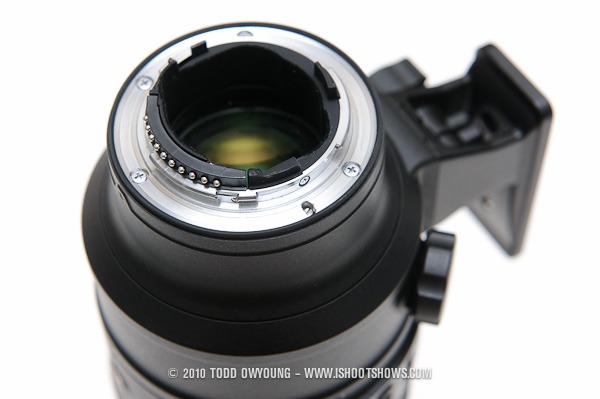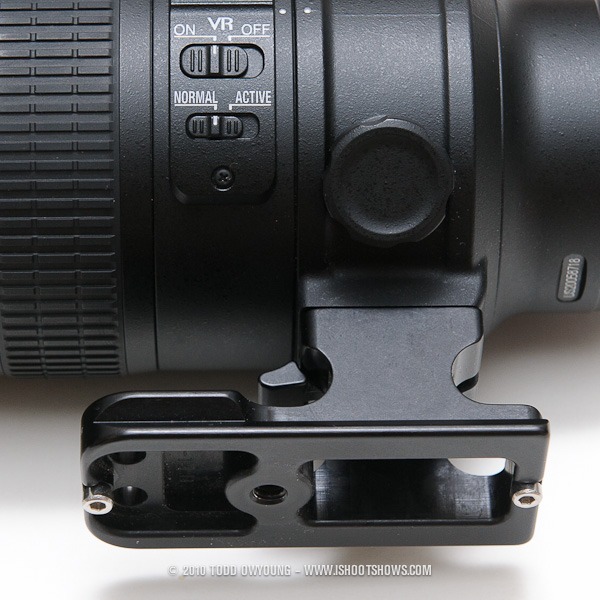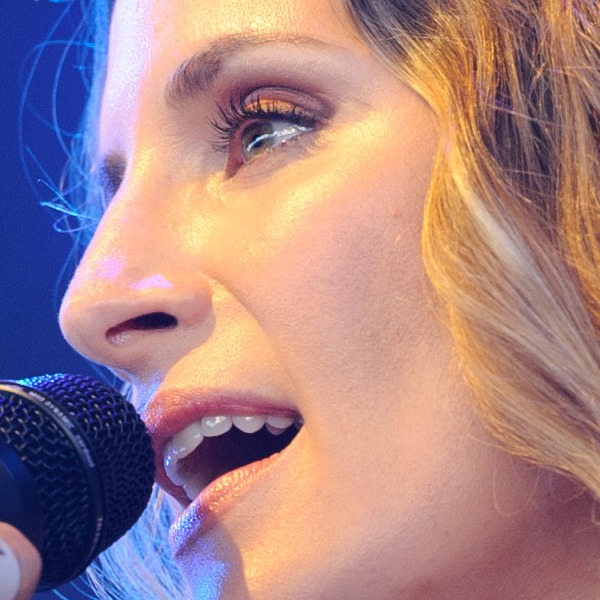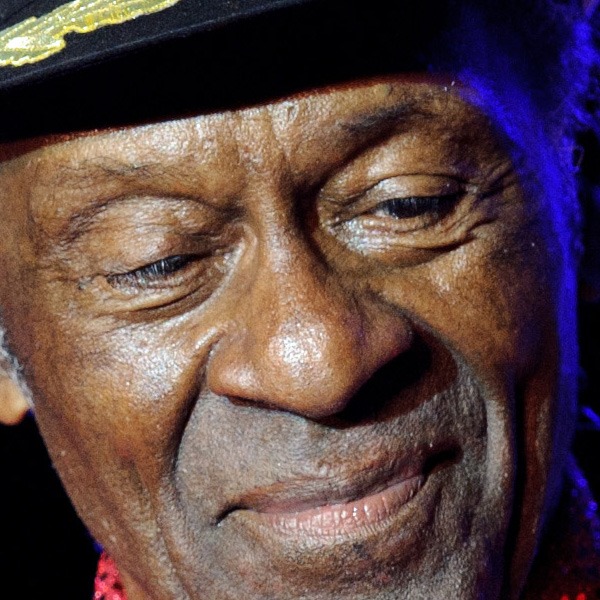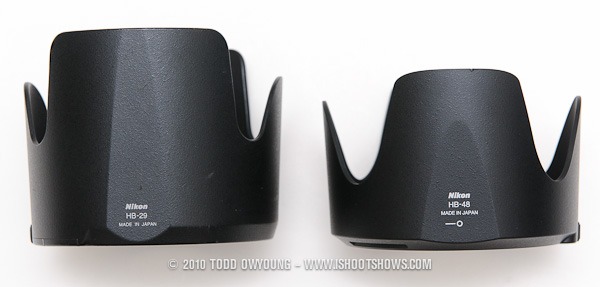
The 70-200mm range has been a staple telephoto lens for decades, starting with manual focus 80-200mm f/2.8 zooms in the 1980s. The latest lens in Nikon's stable is the Nikon 70-200mm f/2.8 VR II, the successor to the popular Nikon 70-200mm f/2.8 VR I that was introduced in 2003.
Thanks to the good folks at B&H Photo in NYC, I've been shooting with the new VR II model for the last six weeks. As many of you know, I already own the first generation VR I model of the lens – so the big question is, how does the new 70-200mm stack up? Let's take a look. 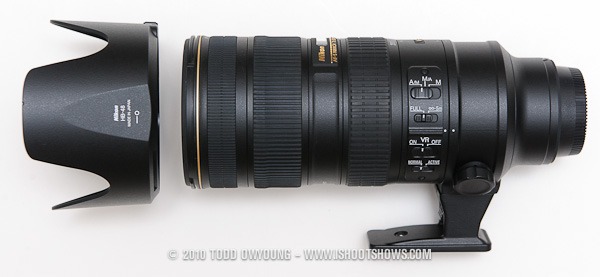
The new zoom isn't just an update of the old 70-200mm, but rather a new optical design along with a few new features as well.
Improvements – Feature Upgrades & Additions
Nano Coating
Just like all it's new heavy-hitters, the new 70-200mm f/28 features Nikon's Nano Crystal Coating, a new-generation multi-coating that reduces ghosting and flare. In my experience with the Nikon 14-24mm f/2.8 and Nikon 24-70mm f/2.8, Nano coating, together with the new optical designs Nikon has been pumping out, produces an image with a clarity that other lenses can't seem to match.The new 70-200mm is no exception.
More than anything, the feeling I get with these lenses with Nano coating is that the images are more like looking at reality than a photographic image. The contrast of the images is rich and natural, with beautiful blacks. When I'm going gray, I'm going to ask Nikon to send me a batch of Nano coating to put in my hair.
VR II Technology
With the new 70-200mm, Nikon has implemented its latest generation of Vibration Reduction techonology, VR II. Nikon states 4-stops of stability with the new VR, over 3-stops with the previous generation.
In my use of VR II and VR I models of the 70-200mm, I never really push the limits of VR for my music photography. Where I think the 4-stops of extra handhold-ability of VR II would be really excellent to try out would be for my personal work in travel photography. With travel photography, I often shooting without a tripod in the fading light of the day – exactly the kind of conditions I think VR II would be beautiful in for stopping down and delivering sharp scenes.
Improved Full-Frame Performance
The first generation of Nikon's Vibration Reduction (VR) 70-200mm was rumored to be optimized for Nikon's line of, at the time, exclusively APS line of DSLRs. With the introduction of the Nikon D3, Nikon's breakout full-frame DSLR, there were grumblings of that suddenly the 70-200mm VR I was a less-than-stellar performer.
The new VR II lens addresses these concerns with a new optical design with lower vignetting and improved corner sharpness at wide apertures than its predecessor. Personally, I never minding or considered vignetting with the VR I model an issue. If anything, for portrait work, you might consider it a feature.
Vignetting Comparison – VR II vs VR I
Here's a comparison of the vignetting performance between the new VR II model (left) and the VR I model (right):
To my eye, there's something like a 1-stop difference between the VR II over the VR I at wide apertures – that is, the VR II's corner shading at f/2.8 is about on-par with the VR I at f/4.
Ergonomics & Controls
Improved Ergonomics & Design
One of the first things you notice about the new 70-200mm f/2.8 is the updated form factor compared to the old telephoto. The new design is a little more squat than the old VR I, which features a slightly longer and more tapered barrel. For me, these changes translate into a more balanced and comfortable grip. While one might think that the more slender barrel of the VR I would produce better ergonomics, the more compact feeling of the new lens just feels right.
In the hand, the new lens balances nicely with a Nikon D3 or gripped D700, thanks to the shorter barrel design and heavier weight.
Switches
Functionally, the controls of the new lens are nearly identical to those of the old 70-200mm. The only real change to the main set of switches is that there is now an A/M choice in addition to M/A and M modes. The new A/M gives priority to Autofocus, even if the focus ring is being toggled while shooting.
Just like the old 70-200mm, the controls include a focus-limiter, VR activation, and a switch for the specific VR mode. Unless you're shooting from a car, helicopter, or other wildly moving position, the normal VR mode is going to yield the best results.
AF & Focus Rings
The new 70-200mm also features a slightly wider zoom ring and a more narrow focusing ring. The latter is an especially nice point, since the focus ring's lower profile decreases the chance of changing the point of focus accidentally while shooting.
The only other real change on the barrel is that Nikon has done away with the AF-lock buttons. Since I have AF toggled by the AF-ON button on the back of the camera (rather than the shutter release), I never had a need for AF lock.
Build Quality
The new telephoto features the build quality you'd expect from a $2k lens. While it's shorter than the previous model, the new VR II is actually a fraction heavier, which gives the lens an even denser feel in the hand. To quote Boris the Blade from Snatch, “Heavy is good. Heavy is reliable. If it does not work, you can always hit him with it.”
Maybe it's just my own 70-200 showing its age, but the new lens just feels a touch smoother in use and better in action.
One of the very welcome improvements with the new VR II is the locking mechanism of the lens hood. Nikon has finally implemented the much more secure hood lock that we've seen in the Nikon 17-55mm f/2.8 and Nikon 24-70mm f/2.8.
Weather Sealing
Just like the lens it replaces, the new 70-200mm f/2.8 VR II features weather sealing throughout the lens body, including a rubber seal at the lens mount. I've shot in very light rain with the VR I and never had a problem with water or moisture interfering with operation.
For most shooters, the weather sealing is something you'll never really “use,” but it's nice to know it's there.
Detachable Tripod-Mounting Foot
One nice feature about the new 70-200mm is that Nikon kept the mount and locking mechanism for the detachable tripod mount the same as its predecessor. While this doesn't matter for many shooters, if you have an accessory foot like the above Really Right Stuff after-market foot, it means that you don't have to buy new RSS foot if you upgrade. The bodylines of the new lens and old foot don't exactly line up, but they lock securely in place.
Performance – Image Quality
Fresh from a delivery of the new Nikon 70-200mm f/2.8 VR II, I had an assignment come up from a client that was the perfect test for the new telephoto. The job? Photographing stylists at half a dozen salons. I grabbed a bunch of lenses, including the venerable Nikon 85mm f/1.4 AF-D and new Nikon 50mm f/1.4 G, but it was the new 70-200mm that was the hero of the two-day shoot.
Contrast
One thing that impressed me right away with the lens was the contrast response of the lens. Whether it's the new optical design of the lens, the Nano coating, or both, the images the new VRII delivers possess a very naturalistic quality to them – snappy contrast without artifice. As I mentioned about Nikon's Nano coating, if anything, it's more like looking at reality than a still image.
Defocusing Quality
Shooting on-location with the new lens was a great opportunity to see how the lens handled it's defocusing characteristics.
With mostly neutral walls and the art direction to introduce as much color as possible into the images, including products in the backgrounds was a nice test to see how the 70-200mm would deal with rendering the clutter.
Overall, I'd say the lens did a great job. And while it might not beat the cult classic the Tokina 90mm f/2.5 for completely buttery smoothness, I'd say that the new telephoto does as well as any modern zoom we've seen (possibly excluding the beastly Nikon 200-400mm f/4 VR).
For my concert work, where defocused points of light are commonplace, the new VR II performs very well. I'd say that the circle of confusion that the lens draws, on average, is pretty neutral. Most instances lack the hard-edged ring that can create distracted defocused elements.
Image Performance – Sharpness
I know. Talk is cheap. Here are some photos that I've made with the new Nikon 70-200mm f/2.8 VR II.
Performance – Sharpness
100% Crops – For The Pixel-Peepers
About that sharpness, we're getting to it. The proof of the pudding is in the eating. So, for the pixel-peepers out there, here are some 100% crops (that is, a crop from the full-resolution file with no resizing).
- Shutter Speed: 1/320
- Aperture: f/2.8
- Focal Length: 95mm
- ISO: 1600
- Camera: Nikon D3
- Lens: Nikon 70-200mm f/2.8 VR II
Processed using Lightroom 3 (sharpening settings at right)
Now, the thing that strikes me most about this shot isn't necessarily the sharpness alone – I think it looks fine. But what really impresses me about this shot is that the crop is from the very top of the frame when the lens is wide open at f/2.8 – not someplace I'd expect to deliver any kind of greatness. And, if you believe the ratings from dpreview.com's test of the 70-200mm f/2.8 VR II, this marginal part of the frame is not topping any of the charts for sharpness.
Here's another one from Common:
- Shutter Speed: 1/800
- Aperture: f/3.2
- Focal Length: 70mm
- ISO: 1600
- Camera: Nikon D3
- Lens: Nikon 70-200mm f/2.8 VR II
Processed using Lightroom 3 (sharpening settings at right)
In this shot, we're closed down 1/3-stop to f/3.2 and shooting at a blazing shutter speed of 1/800 second. Again, a little away from the center of the frame, but to me, the detail in this shot looks great. You have to consider that these images are made at ISO 1600, so there is detail degradation there as well.
- Shutter Speed: 1/320
- Aperture: f/2.8
- Focal Length: 185
- ISO: 800
- Camera: Nikon D3
- Lens: Nikon 70-200mm f/2.8 VR II
This ISO 800 crop starts to show some of the potential of the new VR II lens. As much as I love shooting at ISO 1600 on the Nikon D3, the crop shows the extra detail ISO 800 produces, and the new lens is more than up to the task of rendering that detail. That this was shot wide open – where the lens, short of diffraction, is performing at it's worst – is simply impressive.
Last one – let's go out with the Father of Rock ‘n Roll.
- Shutter Speed: 1/250
- Aperture: f/2.8
- Focal Length: 150mm
- ISO: 1600
- Camera: Nikon D3
- Lens: Nikon 70-200mm f/2.8 VR II
For this shot of Chuck Berry, we're again at f/2.8, and I think that the new 70-200mm f/2.8 VR II is showing some pretty excellent real-world sharpness.
These three 100% crop samples weren't shot in a studio under perfect conditions, but they are examples of what the new telephoto can deliver under working conditions. From the thousands of frames I've shot with the new 70-200mm, I have absolutely no concerns about the wide-open performance of this lens. It's excellent.
Sharpness At Other Apertures Besides f/2.8 & f/3.2
I'm not going to go into the sharpness and performance of smaller apertures with this new 70-200mm. Why? Because it's like standing on the surface of the sun and being asked where it's the hottest. Sure, some parts are warmer than others. But you're on a big ball of plasma.
Trust me. There are a lot of unsharp lenses out there. The new Nikon 70-200mm f/2.8 isn't one of them.
The $64,000 Question
Worth The Upgrade?
Is the new 70-200mm f/2.8 worth the upgrade if you already own the original Nikon 70-200mm f/2.8 VR I? My opinion is no – while the new VR II offers a lot to like, at the end of the day it's still a $2,100 lens. The improvements are not so much that I'm really tempted to make the switch myself. For all the nice 100% crops from the new lens that I've shown, they could have just as well been from the VR I version for all practical purposes.
Now, if my own 70-200mm goes to the big camera bag in the sky, I have no doubt that I'll pick the new lens up in a second.
If you're thinking about upgrading from a third-party telephoto zoom like the Tamron 70-200mm f/2.8 or Sigma 70-200mm f/2.8, it's a different story. From these lenses, there are going to be more remarkable improvements of image quality, but more importantly in focusing speed and focusing precision. Add on the goodness of Nikon's VR II and the other bells and whistles, and this new lens has to be in serious consideration for those in need of a professional 70-200mm f/2.8 lens.
New Buyers
For new buyers considering saving money and going for the original VR I model over the VR II, personally I'd go with the new lens. While I am not myself planning on upgrading, the new lens does present enough improvements that were I starting from scratch, the improvements justify the premium.
When considering that used copies of the VR 1 are going for as much as $1,600 USD, the warranty and guarantee of a factory-conditioned lens are worth the extra $500. The difference in cost if you have to fix a used 70-200 VR is most likely the minimum expense if you have to service it.
Planning For The Future
It is worth noting that the shooting I do is on the Nikon D3 and D700 bodies, which are full-frame 12-mp cameras. If you're shooting on a camera with a higher pixel-pitch, like a Nikon D3x, D2x, D300 (or any other DX camera), I would more strongly suggest the new VR II lens. The reason being that the relatively huge pixels of the D3 sensor are actually more forgiving than many other sensors.
I suspect that on a high resolution camera like the D3x, the differences between the new and old model 70-200mm are going to be even more pronounced, which is another reason to invest in the newer lenses.
Even if you don't shoot on these pixel-packed cameras, it's worth thinking about your upgrade path and needs for future cameras.
Cons Of The Nikon 70-200mm f/2.8 VR II?
The Lens Hood
The worst thing I can say about the new 70-200mm f/2.8, aside from mentioning it's price tag, is mentioning a criticism of the new lens hood, the HB-48.
The redesigned lens hood of the VR II is shallower than it's older brother. And while it features a much-improved locking mechanism to secure it to the lens barrel, you cannot stand the new 70-200mm VR II upright on it's lens hood without the lens tipping over, thanks to the subtle curve of the front edges.
That, and the HB-48 just looks wimpy next to the beefy HB-29 of the VR I.
End Notes:
There's a lot to like about the new Nikon 70-200mm f/2.8 VR II, and the VR II offers some genuine improvements over its predecessor, a lens that I've used for years. With the recent introductions of the Nikon 14-24mm f/2.8 and Nikon 24-70mm f/2.8, and now more recently this upgraded telephoto, I don't think there's been a better time to be a Nikon shooter.

